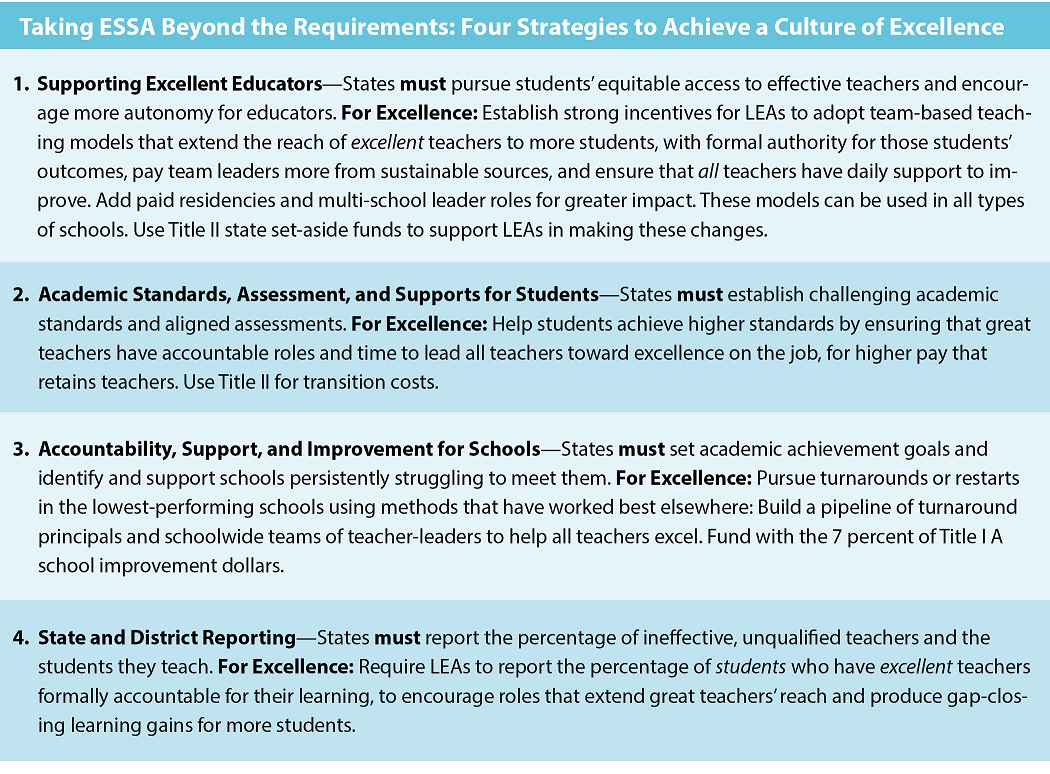State and district leaders, here’s your chance: Under ESSA (the 2016 Every Student Succeeds Act), you can use your new funding flexibility to take a new approach that focuses on excellence for teachers and students. In a new brief and one-page executive summary, we explain four opportunities to achieve a culture of excellence under ESSA, one that attracts even more talented educators, keeps them for longer careers, and helps them excel.
What does ESSA require, and how can you go beyond those requirements? See the summary box below, then read the brief for details about exactly how to achieve excellence under key sections of the law, and about how Opportunity Culture schools make a culture of excellence possible.

More than 100 schools in six states (and growing) are already designing and implementing Opportunity Culture roles to reach every student with excellent teaching. Many use the popular multi-classroom leadership model, in which excellent teacher-leaders lead grade and subject teams while continuing to teach (usually part time), with full accountability for all the team’s students and teacher success; some have teachers extending their reach directly using digital instruction and subject specialization, with extra paraprofessional support.
Opportunity Culture schools are producing far more high growth and less low growth among students than comparable schools, and teacher recruitment and satisfaction are strong. Teachers in advanced roles earn more, too, typically 10 to 50 percent more than average, within budget. Many of the Opportunity Culture schools are high-poverty, and have been able to fill positions selectively instead of having teacher vacancies as they did before creating an Opportunity Culture.
State and district leaders can read more about Opportunity Culture schools here, and see results here. The models can be used in school turnarounds, higher-performing schools, and charter school restarts to make the most of the talent available to each locale.
ESSA: New Law, New Opportunity—A Brief Guide to Excellence for State Leaders was written by Stephanie Dean, Bryan C. Hassel, Emily Ayscue Hassel, and Lucy Steiner of Public Impact.
